Do you want your tennis court to look pristine and perform at its best? Consider Stateline Pressure Washing in Westchester County, NY, now offering professional tennis court cleaning services to keep your court safe, attractive, and durable.
We discuss the importance of tennis court cleaning, the steps involved in the process, the different types of court surfaces, recommended maintenance practices, and why you should choose Stateline Pressure Washing for all your tennis court cleaning needs.
Discover how to keep your tennis court in top condition!
About Stateline Pressure Washing
Stateline Pressure Washing is a reputable company providing exceptional cleaning services in Westchester County, New York State, catering to residential and commercial clients.
With a team of skilled professionals, Stateline Pressure Washing offers a wide range of services to meet all your cleaning needs. Whether you require a thorough power wash for your home’s exterior, a deep clean for your office building, or a gentle treatment for your delicate surfaces, they have the expertise to deliver top-notch results.
The company’s commitment to quality is evident in their meticulous approach to every project, ensuring that your property shines like new after their visit. Stateline Pressure Washing takes pride in serving a diverse clientele across Westchester County, from bustling urban areas to tranquil suburban neighborhoods.

What Is Tennis Court Cleaning?
Tennis court cleaning is the process of removing dirt, debris, and stains from outdoor tennis courts to maintain their appearance and functionality.
Regular maintenance of tennis courts is essential for ensuring optimal playing conditions and prolonging the lifespan of the court surface. By engaging in proper cleaning techniques, such as sweeping, power washing, and applying specialized cleaning solutions, players can enjoy a safer and more professional playing surface.
A clean tennis court enhances the overall aesthetic appeal of the facility, creating a positive impression for players and visitors alike. It also helps prevent deterioration and potential safety hazards, leading to a more enjoyable and competitive playing experience.
Why Is Tennis Court Cleaning Important?
Tennis court cleaning is crucial for various reasons, including enhancing safety for players, prolonging the court’s lifespan, and improving the overall aesthetics of the playing surface.
Regular maintenance not only ensures a tidy surface but also reduces the risk of injuries by preventing moss or algae build-up, which can make the court slippery. By removing debris promptly, you can prevent premature wear and tear, ultimately extending the life of the court.
A clean court with well-marked boundaries and net enhances the overall appeal of the facility, leaving a positive impression on players and visitors alike.
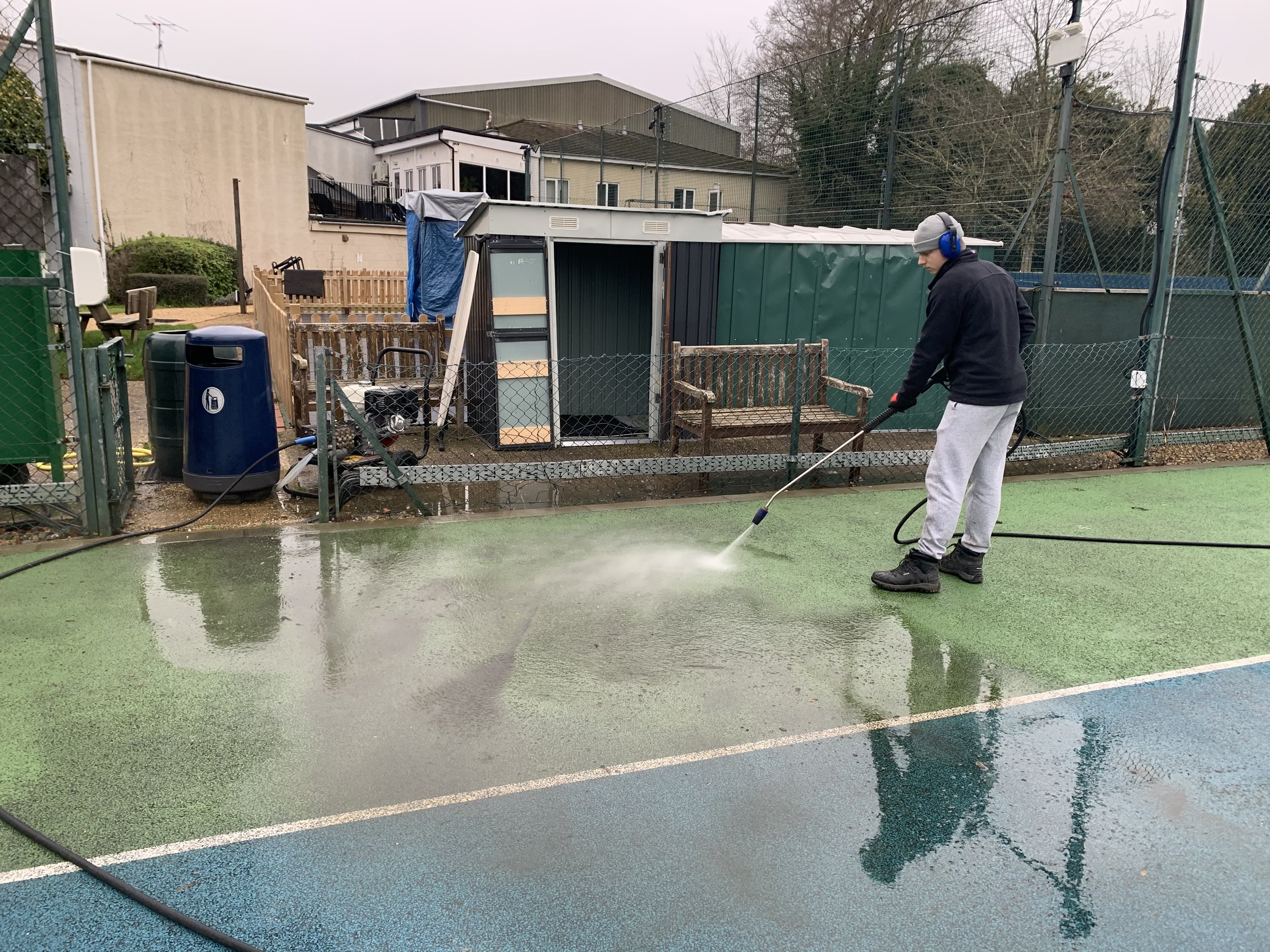
Improves Safety for Players
Efficient tennis court cleaning significantly improves safety for players by eliminating slippery surfaces, reducing tripping hazards, and ensuring optimal playing conditions.
By maintaining clean tennis courts, players can benefit from enhanced traction during games, reducing the likelihood of slipping and potential injuries. A clean court surface also ensures a consistent bounce of the ball, contributing to a more predictable and enjoyable playing experience.
Proper maintenance of tennis courts involves regularly inspecting and repairing any cracks or uneven surfaces that could pose risks to players.
This attention to detail not only enhances safety but also prolongs the lifespan of the court itself, providing a durable and high-quality playing surface for athletes of all levels.
Extends the Life of the Court
Regular tennis court cleaning procedures help extend the lifespan of the court by preventing premature wear, maintaining surface integrity, and preserving the court’s structural components.
Tennis court cleaning not only enhances the aesthetic appeal of the court but also plays a vital role in ensuring player safety. By removing debris, moss, algae, and other contaminants regularly, the court’s surface remains smoother, reducing the risk of slips and injuries.
Proper cleaning routines help prevent the buildup of dirt and grime that can deteriorate the court’s materials over time.
Incorporating specialized equipment and cleaning solutions tailored to the court’s surface material further optimizes the cleaning process. Whether it’s a hard court, clay court, or artificial turf, using the right cleaning techniques helps in preserving the court’s original texture and color, ultimately prolonging its lifespan.
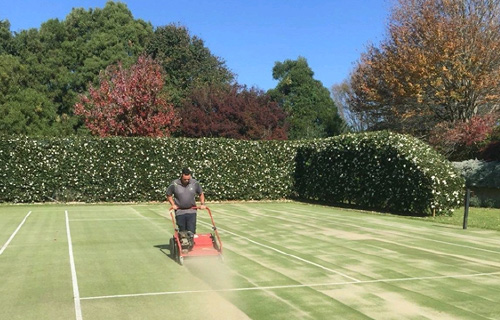
Regular maintenance not only benefits the playing surface but also safeguards the structural integrity of the court. A clean court is less prone to cracks, potholes, and other damages that can compromise the overall functionality and durability of the playing area.
Taking the time to clean and maintain the court diligently pays off in the long run by ensuring a safe, high-quality playing environment for tennis enthusiasts.
Enhances the Aesthetics of the Court
Aesthetic enhancements resulting from thorough tennis court cleaning include a visually appealing surface, vibrant colors, and a professional appearance that elevates the overall aesthetics of the court.
By maintaining a clean playing surface, players can enjoy a better game experience, free from debris or distractions. The restoration of color on the court also contributes to its overall attractiveness, making it more inviting to both players and spectators alike.
The vibrancy of the surface can impact the gameplay by providing better visibility of the ball’s trajectory and enhancing the overall playing conditions. This attention to detail reflects a commitment to excellence and care for the tennis court’s visual appeal.

What Are the Steps Involved in Tennis Court Cleaning?
The process of tennis court cleaning typically involves several key steps, including court inspection, pre-treatment of stains and debris, pressure washing the surface, and post-cleaning inspection for quality assurance.
Before diving into the cleaning process, inspecting the court is crucial to identify areas that require special attention. These could be spots with stubborn stains, accumulated dirt, or signs of wear and tear.
Effective pre-treatment of stains and debris is essential to loosen them up and make them easier to remove during the washing phase. Next, utilizing a pressure washer with the appropriate settings is vital to ensure a thorough clean without damaging the court surface.
After the pressure washing is completed, a post-cleaning inspection is done to check for any missed spots or remaining debris, guaranteeing a pristine court for players.
Inspection of the Court
The initial step in tennis court cleaning is a comprehensive inspection to identify areas requiring cleaning, repair, or specialized treatment to ensure a thorough cleaning process.
During the court inspection, various stains such as mold, mildew, dirt buildup, or even oil spills can be pinpointed which may require specific cleaning methods.
This assessment also helps in spotting any damages like cracks, chips, or surface unevenness that need immediate repair to prevent further deterioration.
By examining the court thoroughly, maintenance needs like resealing, repainting, or re-surfacing can be determined, ensuring the longevity and functionality of the playing surface.
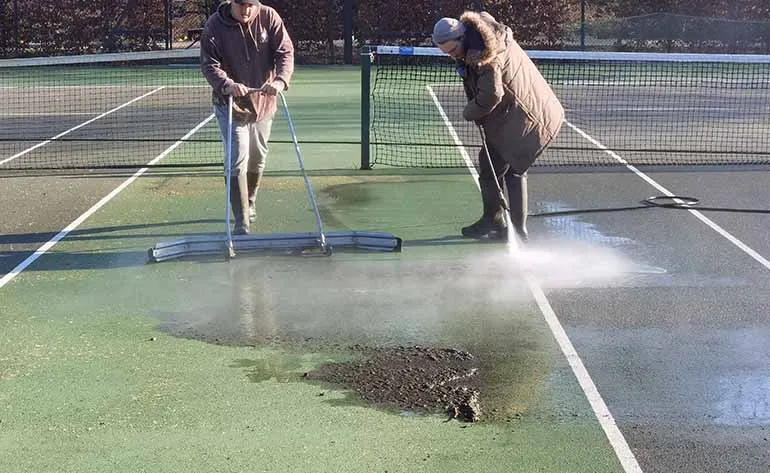
Pre-treatment of Stains and Debris
Pre-treating stubborn stains and debris on tennis courts involves applying specific cleaning solutions or treatments to loosen the contaminants before the actual cleaning process begins.
By pre-treating the surface, it becomes easier to remove tough stains caused by mud, oil, rust, or algae accumulation, ensuring a more efficient cleaning process. Some common pre-treatment methods include using biodegradable degreasers to break down oil residue or applying oxidizing agents to tackle organic stains.
A thorough pre-soaking of the court surface can aid in softening debris for easier removal.
Pressure Washing the Court
Pressure washing the tennis court surface is a critical step that involves using high-pressure water jets to clean dirt, grime, and contaminants, restoring the court’s appearance and functionality.
By utilizing the immense power of pressurized water, the cleaning process effectively breaks down stubborn stains, algae growth, and debris deeply embedded in the court’s surface.
Over time, weather conditions and regular use can lead to a buildup of dirt and grime, impacting the court’s aesthetic appeal and safety. Pressure washing not only removes visible marks but also targets hidden contaminants, ensuring a thorough cleaning process.
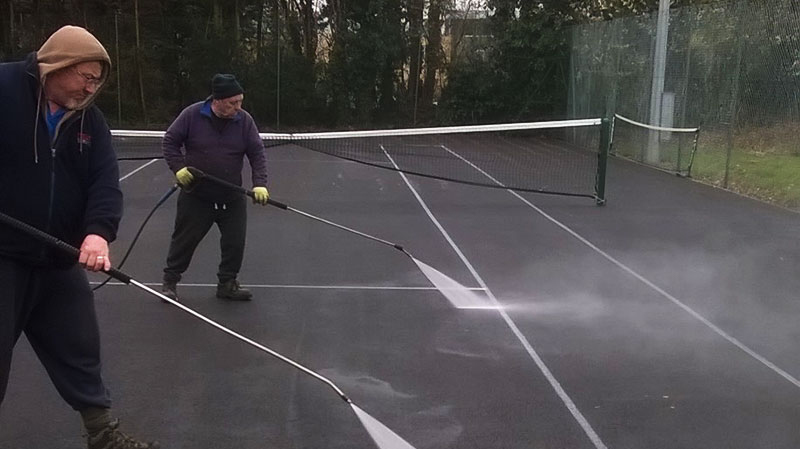
Post-cleaning Inspection
Conducting a post-cleaning inspection ensures that the tennis court has been thoroughly cleaned, all stains and debris have been removed, and the surface meets quality standards for safe and optimal play.
By thoroughly examining the court post-cleaning, you can detect any missed spots or imperfections that could affect gameplay or pose safety risks. Quality control during these inspections is crucial for maintaining a professional and well-kept appearance of the court.
During safety checks, inspectors assess factors such as proper drainage systems, line markings, and net tension to ensure a secure environment for players. These assessments also help prevent accidents and injuries during matches or practice sessions.
Final touch-ups, such as polishing, line repainting, or repairs, provide that finishing flourish to the court, enhancing its overall aesthetics and functionality. These detailed inspections and touch-ups contribute immensely to the longevity of the court’s surface and player satisfaction.
What Are the Different Types of Tennis Court Surfaces?
Tennis courts come in various surface types, including clay courts, grass courts, hard courts, and artificial turf courts, each offering unique playing characteristics and maintenance requirements.

Clay courts are known for their slower pace, which allows players more time to set up shots and slide into position smoothly. They are considered more forgiving on the body due to their softer surface, making them ideal for players who prefer longer rallies and strategic gameplay.
Grass courts, on the other hand, offer a fast-paced playing experience with low ball bounce, requiring players to adjust quickly. This surface is favored by serve-and-volley players who rely on speed and agility to dominate points.
Hard courts are versatile and commonly found in many tennis facilities. They provide a consistent bounce, suitable for a variety of playing styles, from aggressive baseliners to all-court players. Maintenance costs are typically lower for hard courts compared to grass or clay surfaces.
Artificial turf courts aim to replicate the feel of natural grass while offering enhanced durability and lower maintenance requirements. These courts provide a medium-paced playing experience, combining the benefits of grass and hard surfaces. They are ideal for players looking for a balance between speed and comfort during matches.
Clay Courts
Clay courts are known for their slower pace, high bounce, and player-friendly surface that reduces the risk of injuries, making them popular among tennis enthusiasts seeking a traditional playing experience.
Due to the fine particles of crushed stone, brick dust, or shale that make up the surface, clay courts offer excellent traction and grip, allowing players to slide into their shots with ease.
The slower pace of the ball on clay requires players to rely more on strategy and consistency rather than just power, which adds a tactical dimension to the game.
In terms of maintenance, clay courts need regular watering to keep the surface moist and prevent it from drying out and becoming dusty. The surface requires frequent rolling and leveling to maintain its smoothness and uniformity, ensuring a consistent playing experience for players.
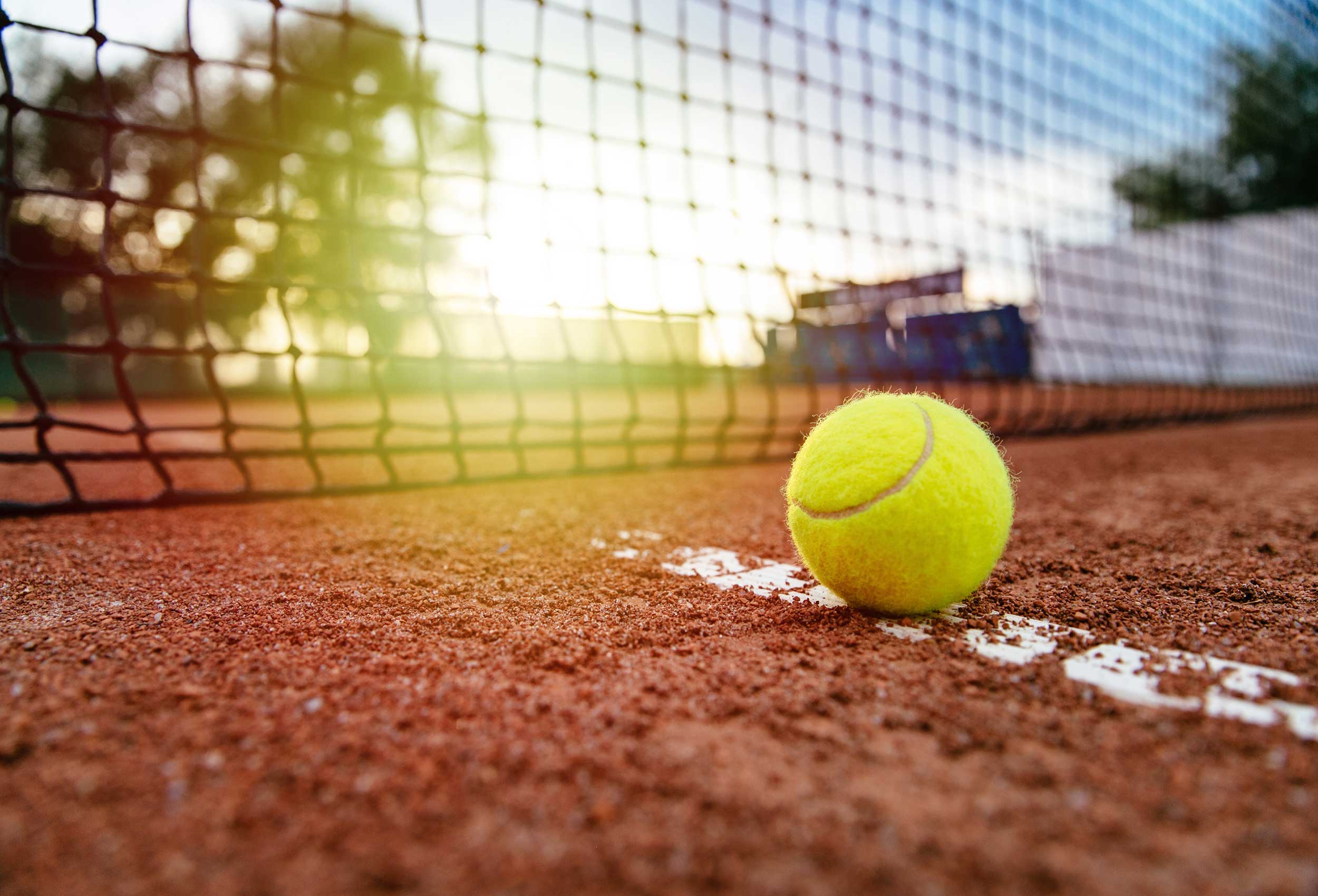
Grass Courts
Grass courts offer a fast-paced playing experience, low ball bounce, and unique challenges due to the surface’s natural variability, requiring specialized care and maintenance to preserve their quality.
Speed is a defining characteristic of grass courts, with balls moving quickly and sliding low, making it crucial for players to adjust their footwork and timing.
The ball behavior on grass courts is also unpredictable, as it tends to skid and stay low upon impact, demanding precise control and positioning from the players.
The maintenance of grass courts involves regular mowing, watering, and fertilizing to sustain the grass’s vigor and consistency, ensuring a consistent playing surface for tournaments and recreational use.
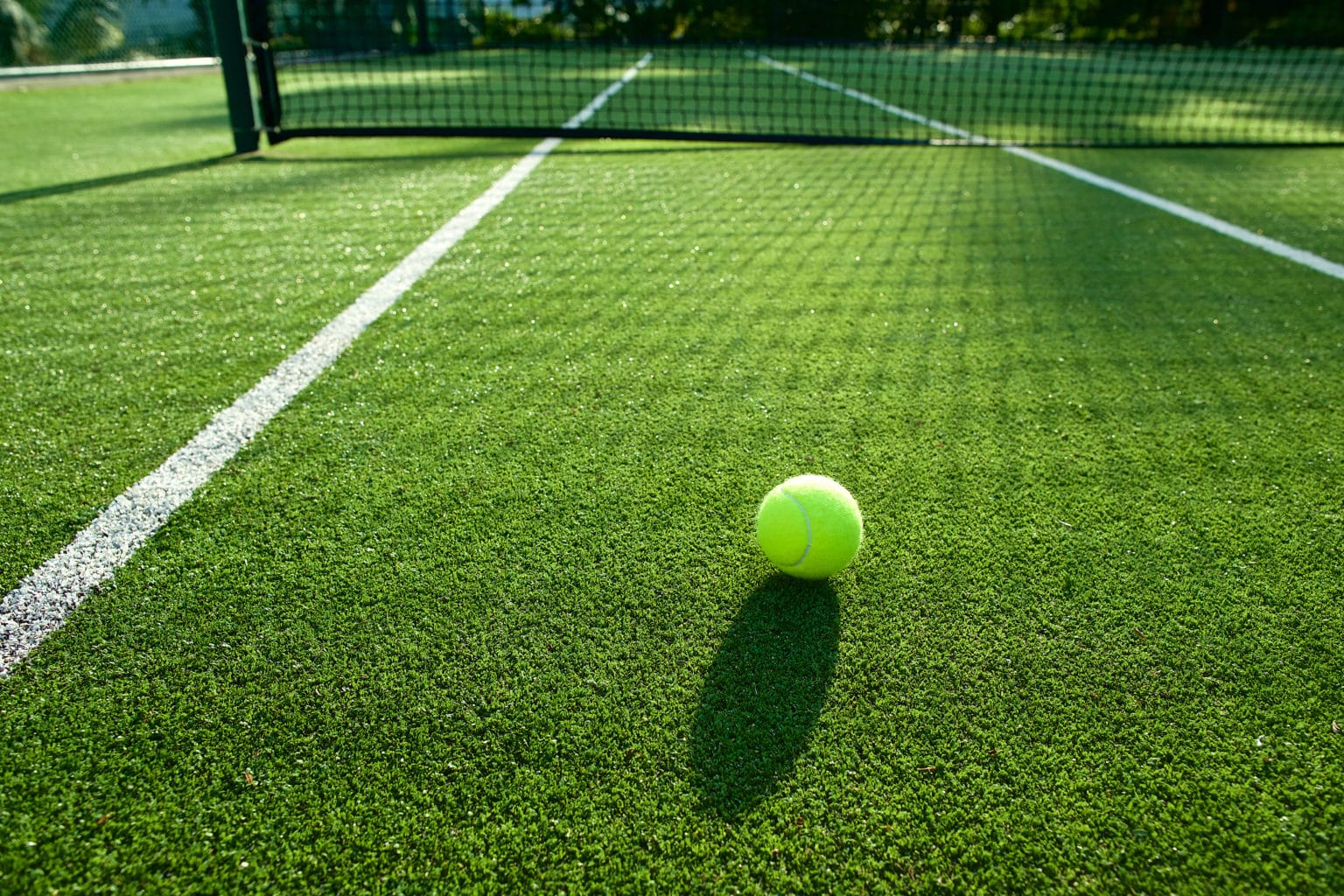
Hard Courts
Hard courts provide a medium-paced playing surface, consistent ball bounce, and durability, making them suitable for various playing styles and climates, with maintenance emphasizing surface resurfacing and crack repairs.
What sets hard courts apart is their versatility in accommodating different types of players; from baseline grinders to aggressive net players, the surface offers something for everyone.
With their durable acrylic coatings, hard courts can withstand heavy foot traffic and adverse weather conditions, ensuring a longer lifespan compared to other surfaces.
Regular maintenance on hard courts involves cleaning debris, pressure washing, and applying fresh paint to restore the court’s appearance. Filling cracks and addressing surface imperfections are essential to prevent injuries and prolong the court’s lifespan, requiring attention to detail and skilled workmanship.
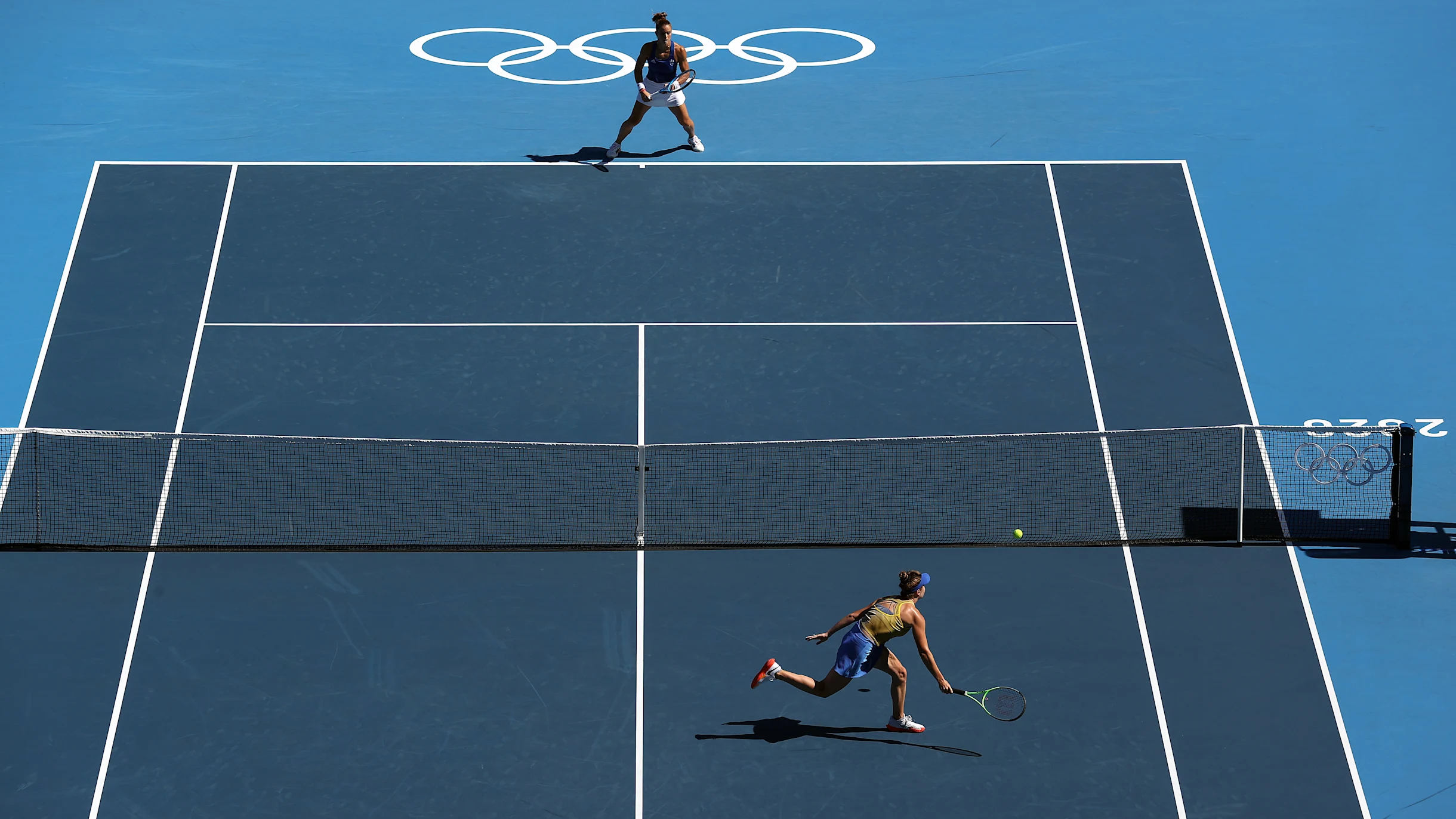
Artificial Turf Courts
Artificial turf courts offer consistent playing conditions, low maintenance requirements, and all-weather usability, providing players with a reliable and durable surface for tennis matches.
One of the key advantages of artificial turf courts is the uniform surface they provide, minimizing variations in play due to factors like uneven terrain or divots. Players can enjoy a consistent bounce and speed, enhancing the quality of their game.
The low maintenance nature of these courts saves both time and cost, as they require minimal watering, mowing, and resurfacing compared to natural grass or clay courts.
The weather resilience of artificial turf courts ensures that matches can continue even in inclement conditions. These courts drain water efficiently, reducing the chances of rain delays and allowing for uninterrupted play. This feature makes them particularly appealing for venues where unpredictable weather can impact scheduling.
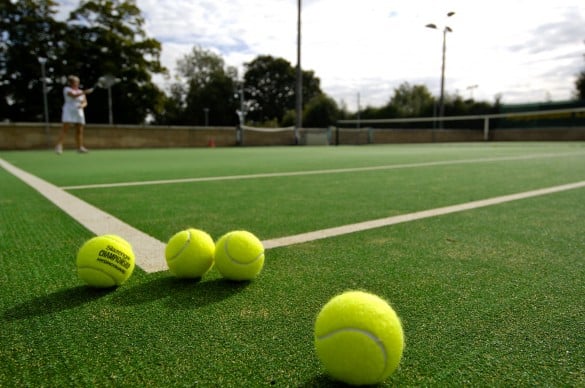
What Are the Recommended Maintenance Practices for Tennis Courts?
Effective maintenance of tennis courts involves regular cleaning to remove debris, periodic resurfacing to address wear and tear, and timely crack repairs to prevent surface damage and ensure player safety.
Regular cleaning routines play a crucial role in extending the lifespan of the court and enhancing its performance. Removing dirt, leaves, and other debris not only improves the aesthetic appeal but also prevents potential hazards during play.
Scheduled resurfacing is essential to maintain the desired surface texture and bounce consistency. By refreshing the top coating, you can address any surface imperfections and ensure a uniform playing experience.
In terms of crack repairs, swift action is key to preventing minor issues from escalating. Applying specialized sealants can effectively seal cracks and fissures, safeguarding the surface against moisture infiltration and further deterioration.
Regular Cleaning
Regular cleaning of tennis courts is vital to prevent dirt buildup, maintain surface traction, and preserve the court’s appearance, requiring consistent upkeep and scheduled cleaning routines.
Keeping tennis courts clean not only enhances the playing experience but also plays a crucial role in ensuring the safety of players. Dirt and debris accumulation can lead to slippery surfaces, increasing the risk of accidents and injuries during play.
Regular cleaning helps in extending the lifespan of the court, protecting it from wear and tear caused by environmental factors.
A well-maintained court not only looks appealing but also reflects the professionalism and care put into its upkeep, creating a positive impression on players and visitors alike.
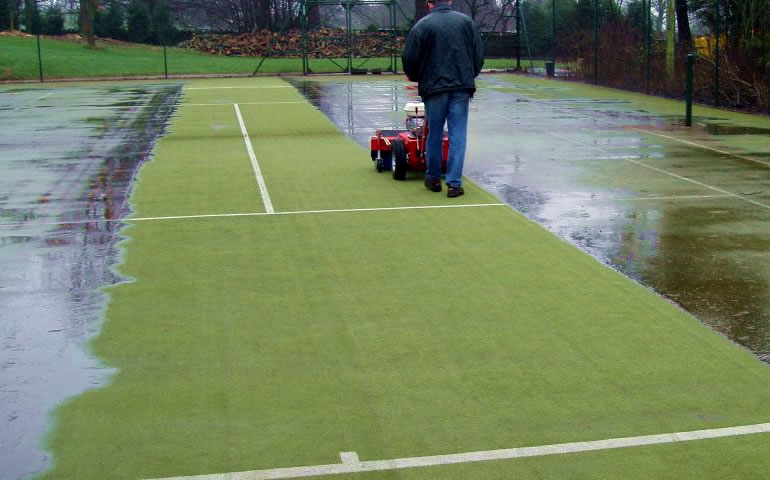
Resurfacing
Periodic resurfacing of tennis courts is necessary to address surface wear, restore playing consistency, and extend the court’s lifespan through professional reapplication of surfacing materials.
Proper maintenance of tennis courts not only enhances the overall aesthetics of the playing surface but also ensures optimal performance. Resurfacing is crucial to combat the natural wear and tear caused by constant foot traffic and environmental factors.
By addressing wear patterns through resurfacing techniques such as leveling, crack repairs, and color coating, the integrity of the court is preserved.
Utilizing high-quality materials in the resurfacing process, such as acrylic coatings and cushioning layers, can significantly impact the court’s playability and durability.
Crack Repair
Timely crack repair on tennis courts is essential to prevent moisture intrusion, structural damage, and safety hazards, requiring professional attention to seal and reinforce compromised court surfaces.
Cracks left untreated can quickly deteriorate, allowing water to seep into the court’s foundation, leading to costly repairs and potential safety risks for players. To address this issue, various repair methods such as crack filling, patching, and overlay applications are utilized, all aimed at restoring the court’s integrity and preventing further damage.
Structural reinforcement techniques, including resurfacing with specialized materials and installing subsurface drainage systems, play a vital role in ensuring the longevity and safety of the tennis court.
These measures not only enhance the court’s aesthetics but also contribute to its overall durability and performance.

Why Choose Stateline Pressure Washing for Tennis Court Cleaning?
Selecting Stateline Pressure Washing for your tennis court cleaning needs ensures unmatched experience, expert handling, use of advanced equipment, and eco-friendly cleaning solutions for superior court maintenance.
When you opt for Stateline Pressure Washing to take care of your tennis court, you are tapping into a wealth of experience that guarantees exceptional results. Their knowledgeable team understands the intricacies of tennis court cleaning, ensuring that every square inch is thoroughly and meticulously cleaned.
Moreover, Stateline Pressure Washing invests in top-of-the-line equipment that is specifically designed for tennis court maintenance, delivering a level of clean that is hard to replicate with ordinary tools.
This superior technology allows for deep cleaning, stain removal, and preservation of the court’s surface integrity. By choosing Stateline Pressure Washing, you are also championing an eco-conscious approach to cleaning.
Their dedication to using environmentally friendly solutions not only ensures a safe playing environment but also demonstrates a commitment to sustainable practices and the preservation of the surrounding ecosystem.
Experience and Expertise
Stateline Pressure Washing’s extensive experience and expertise in tennis court cleaning guarantee precise and professional service delivery, ensuring optimal cleaning outcomes and customer satisfaction.
With a meticulous approach to every job, their team is equipped with top-notch equipment and environmentally friendly cleaning solutions to tackle dirt, grime, and mold effectively.
Stateline Pressure Washing prides itself on exceeding client expectations, demonstrated through a track record of satisfied customers who rave about the restored look and longevity of their tennis courts after their service.
Their industry proficiency is evident in every project, with attention to detail and a commitment to delivering unparalleled results.
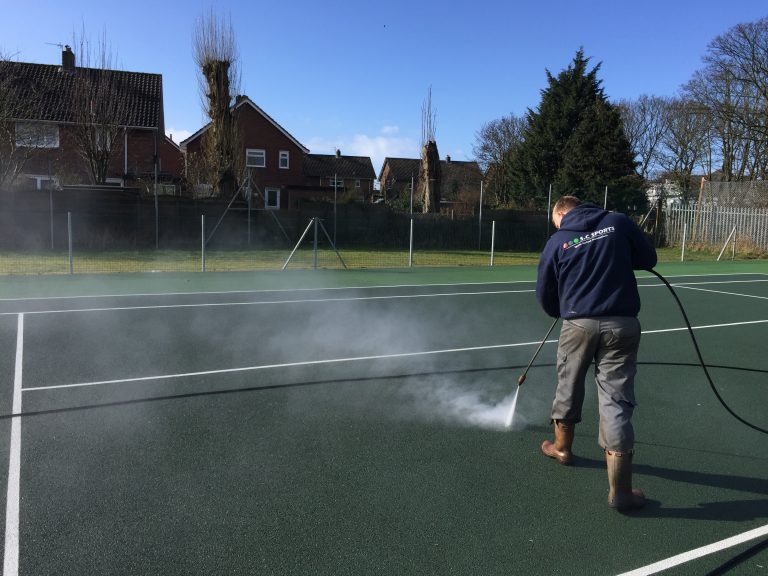
Use of Professional Equipment and Techniques
Stateline Pressure Washing employs state-of-the-art equipment and advanced cleaning techniques for tennis court maintenance, ensuring thorough cleaning, efficient operations, and exceptional results.
By utilizing cutting-edge technology, they are able to achieve a level of cleaning precision that surpasses traditional methods. The use of high-powered pressure washers and specialized cleaning solutions allows them to tackle even the most stubborn dirt and grime on the court surface.
This attention to detail not only enhances the overall appearance of the court but also prolongs its lifespan.
Their commitment to service efficiency means that they can complete the cleaning process quickly and effectively, minimizing disruption to players and ensuring that the court is ready for use in no time.
Environmentally-friendly Cleaning Solutions
Stateline Pressure Washing prioritizes the use of environmentally-friendly cleaning solutions for tennis court maintenance, ensuring eco-conscious practices, safety compliance, and sustainable service delivery.
With a strong commitment to environmental responsibility, Stateline Pressure Washing goes the extra mile in ensuring that its tennis court cleaning practices align with green cleaning solutions.
By integrating bio-degradable products, minimizing water wastage, and reducing chemical usage, the company actively contributes to promoting sustainability in its operations.
The team at Stateline Pressure Washing places a high priority on chemical safety, opting for non-toxic alternatives that uphold safety standards while effectively maintaining the integrity of the courts.
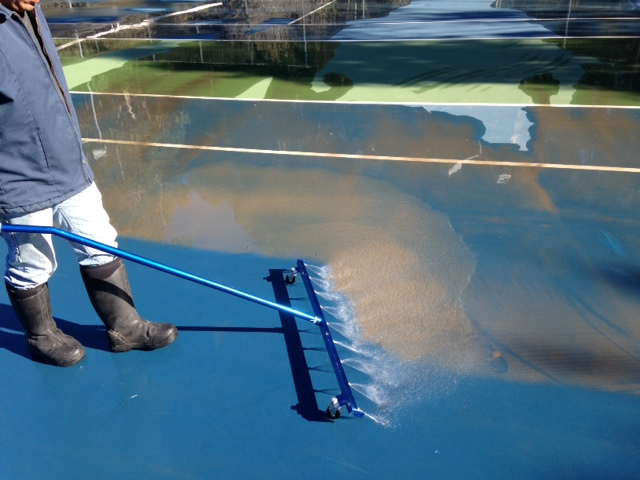
Frequently Asked Questions (FAQs)
1. What is the importance of regular tennis court cleaning and maintenance?
Regular cleaning and maintenance of tennis courts is essential for the safety and longevity of the surface. Dirt, debris, and mold can accumulate on the court, making it slippery and hazardous for players. Additionally, regular maintenance can prevent damage and extend the life of the court.
2. How often should a tennis court be cleaned and maintained?
Ideally, tennis courts should be cleaned and maintained at least twice a year, or more if the court is heavily used. This will ensure that the court remains safe and in good condition for players.
3. What methods are used for tennis court cleaning and maintenance?
At Stateline Pressure Washing, we use a combination of pressure washing, scrubbing, and chemical treatment to thoroughly clean and maintain tennis courts. This ensures that all dirt, grime, and mold are removed from the surface.
4. Can tennis court cleaning and maintenance help prevent repairs in the future?
Yes, regular cleaning and maintenance can help prevent costly repairs in the future. By removing dirt and debris, and treating any mold or mildew, the surface of the court will remain strong and prevent potential damage.
5. Will the cleaning process damage the tennis court surface?
No, our cleaning process is gentle yet effective and will not damage the surface of the tennis court. We use industry-approved methods and equipment to ensure the integrity of the court is maintained.
6. Is tennis court cleaning and maintenance a specialized service?
Yes, tennis court cleaning and maintenance requires specialized training and equipment. At Stateline Pressure Washing, our team has the expertise and experience to safely and effectively clean and maintain tennis courts, ensuring the best results for our clients.